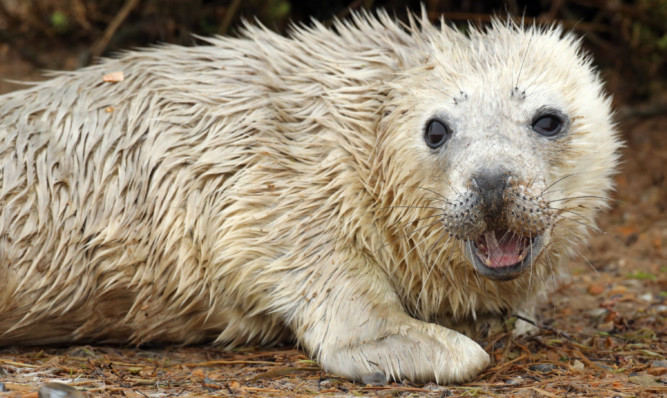St Andrews University marine biologist Callan Duck has been monitoring the size and status of UK seal populations for 26 years.
But the expert is in deep water when he tries to explain why seal populations in the Firth of Tay and Eden Estuary have fallen by over 90% in the last 12 years.
Since 2004, the number of harbour seals in the Tay estuary have dropped from 640 to just 50.
It reflects a similar trend in Orkney where harbour seal numbers have fallen from 8500 to under 2000 with similar patterns in Shetland, though not quite as extreme.
It is thought competition with the larger and more populous grey seal could be to blame. It’s also been suggested the harbour seals may be being killed off by exposure to toxins from algae.
But Mr Duck said the truth is no one knows for sure.
“It’s a real head scratcher, and we don’t have much of a clue,” said Mr Duck, 59, based at St Andrews University’s Sea Mammal Research Unit (SMRU) at East Sands Scottish Oceans Institute.
“There are a number of different possibilities. You might remember we had stories in the press a few years ago about ‘cork screw’ injuries being sustained by seals around the Firths of Forth and Tay. We thought at the time they might be injuries from boat engine motors. Now we think the injuries are actually being caused by attacks from grey seals.
“Such attacks have been witnessed on the Isle of May. Greys have been seen killing grey seal pups and harbour seals with the injuries tallying with the cork screw type wounds.
“What we don’t know is why it’s happening. It’s unlikely to be because of a food shortage because seals will just about eat anything. But maybe that in itself is the reason. We have these large grey males on the Isle of May for example who might just kill pups because they can. But it’s not just restricted to the east coast of Scotland. It’s happening in the Gulf of Lawrence too.
“Orcas can take a few, and entanglement in rubbish can kill some. But it doesn’t explain the larger trend.”
Born and raised in the Punjab where his parents were medical missionaries, Mr Duck, now 59, moved to Ayrshire and the Highlands before going on to study zoology at Edinburgh University. He studied red deer on Rum and fur seals with the British Antarctic Survey before joining the SMRU, then based in Cambridge, in 1990.
In 1996, the SMRU moved to St Andrews University and Gatty Marine Laboratory, where he has been based ever since.
Working with fellow St Andrews academics Chris Morris and Dave Thompson, Mr Duck’s main function is to monitor the size and status of the UK seal populations with most of his work in Scotland.
Carrying out aerial survey work using light aircraft and small helicopters, they photograph harbour seals during their June and July breeding season in limited local areas. The main surveys are during their annual moult, in August, when they obtain an index of the size of populations in different parts of Scotland.
They survey Scotland’s 60 to 65 breeding colonies of grey seals during their breeding season, between mid- September and the end of November/early December.
“Greys, which are bigger and more numerous, give birth to a single pup which is born with a white coat a throwback to the ice age when it helped camouflage them in the landscape, “ said Mr Duck.
“The greys, such as those on the Isle of May, breed at precise locations year after year. There’s some evidence they go back to where they were born to give birth possibly within 10 or 15 metres.
“There are 112,000 greys in the UK with around 85,000 of them in Scotland.
“Locally around 4500 grey pups are born per year in the Firth of Forth Inchkeith, Isle of May and St Abbs- and there have been up to 2500 at Tentsmuir.
“By contrast, the common or harbour seals moult their white fur when they are still in the uterus. Harbour seals are born below the low water mark on rocks or amongst seaweed and can swim away with their mothers within an hour of being born. So to get an accurate count of harbour seal pups is hard. We tend to count them when adults are moulting and use thermal imagery from a helicopter. They tend to be strewn right around the coast.”
Mr Duck said he was looking forward to the recently announced £10 million marine research facility investment for St Andrews University that would help cement Scotland’s reputation as a world leader in oceanic research and species protection.
The state-of-the-art marine biology lab at East Sands will replace the internationally renowned, but now out-dated Gatty Marine facility.
The new facility will provide a global hub for marine research focused on conservation and understanding the effects of climate change on the world’s oceans.
